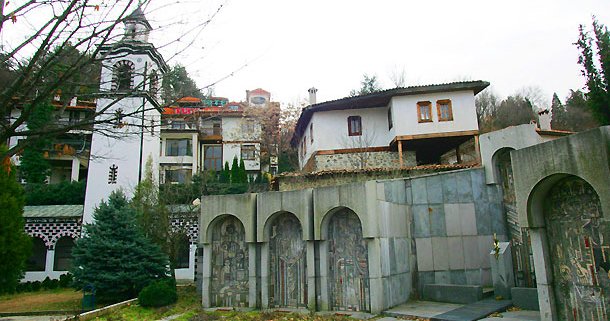The compilers of each tour guidebook in Bulgaria proudly mark the fact that this country has a rich and ancient history. That is why, tourists from near and far countries, used to the intensity of urban life, curiously look for those authentic places in Bulgaria which keep memories of the past.

© Photo: BGNES
Every big city has an old part which is a favorite destination for walks and recreation for the local citizens and the visitors. The authorities take good care of such special places in order to preserve their authenticity and unique look. Some of them were included in the list of the 100 National Tourist Sites. One of these places is the architectural complex Varosha which is the oldest quarters in the town of Blagoevgrad (South Western Bulgaria). Everyone who comes to this magnificent place sinks into the past in no time. The clean cobblestone streets and white stone houses dating back to the National Revival period resemble scenery of a historic movie. It is a challenge for all visitors here to make their own discoveries about this magnificent place and fill with enthusiasm each time they look at the old houses in Varosha. Those who want to receive detailed historical information can go to a special place - the Regional Museum of History in Blagoevgrad. It is situated in the old part of the town and is full of memories of the one-time lifestyle of our ancestors. According to Elena Alexandrova who is the keeper of the museum, the architectural complex Varosha is one of the most-visited tourist sites in the town.

© Photo: BGNES
The Church of the Holy Mother in Varosha
“The architectural outlook of Varosha quarters in Blagoevgrad does not differ from the other Bulgarian places from the National Revival period which also bear this name. There were mainly one-story buildings in this town which usually look towards their yards. Later, in the mid 19th century, people started to construct houses along the main street. The tendency of outer decorative frescoes on the buildings’ walls also emerged in this period. Today, the only house in this district with such paintings is Moshtanska House built in 1888. The Presentation of the Blessed Virgin church built in 1844 was and continues to be the biggest temple in the district. The whole population of the town joined in the construction of this church. All public figures of Blagoevgrad took part in the building process along with the brick layers. The wall paintings were made by icon-painters of the Bansko Art School and so were most of the icons. Masters from the Samokov Art School also joined in”, says Elena Alexandrova, curator at the Regional Museum.

© Photo: BGNES
The Regional Museum of History in Blagoevgrad was opened in 1952. It consists of several sections: Archeology, Ethnography and Nature. There are some 160 thousand exponents in this museum.
“There are halls for temporary exhibitions in the museum. Currently, visitors can see an exposition representing the history of the town and its citizens”, Elena Alexandrova further explains. “The display of the museum treasury is very interesting. It was shown in 2012 on the occasion of the 60th anniversary since the opening of the Regional Museum of History. Another exhibition dedicated to this anniversary is entitled “Uprising for the liberation of Macedonia and Edirne Thrace”. A child exhibition entitled “Classroom of the nearest past” is also held at the museum. We also have a child corner where we make interactive archeological and environmental presentations.”

© Photo: BGNES
The town of Blagoevgrad is situated some 100 kilometers southwest of Sofia on the route to the Bulgarian-Greek border. It has long ago become popular as one of the major educational centers in Bulgaria. Young people arrive from all parts of the country to study in several universities and colleges in this town. Now, the central part of the town has a contemporary look. However, everyone who wants to make a walk back in time can visit the old Varosha part.
English version: Kostadin Atanasov
Supposedly, the city of Kabyle that thrived in what is now Southeastern Bulgaria, was named after the Thracian Mother of Gods Cybele portrayed on the rocks of the Zaychi Vrah shrine. It was at the foot of this ancient astronomical..
First city, centre – that is the meaning of the name Pliska, which the founders of the First Bulgarian Kingdom gave to their capital in the 7 th century. They selected a location where major trade routes intersected, whereas the..
Samokov lies just 55 kilometers from Sofia and is best known for its proximity to the ski resort of Borovets. The people who have inhabited these parts through the ages have left abundant evidence – for example stone, wood and paper..

+359 2 9336 661
